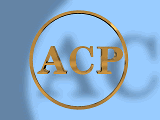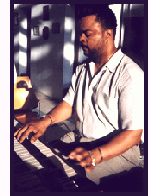American Catholic Press
16565 S. State Street, South Holland, Illinois 60473
|
||||||||||||||||||||||||
|
|
||||||||||||||||||||||||
|
by Rembert G. Weakland, O.S.B, Archbishop
of Milwaukee Since Vatican II What has happened since Vatican II? The vast repertoire of Masses in Latin has disappeared. Two problems have resulted. First of all, choirs have become discontent and disbanded; or overzealous pastors have implied they were no longer needed. Secondly, a satisfactory repertoire that integrates choir and congregation has not existed. It is good to see that both of these problems are slowly disappearing. Choirs are returning, and there exists a new body of adequate music for them to sing with the congregation or at special moments. Choir members are also aware of their role in sustaining and helping the congregation. The use of the vernacular strained the small existing repertoire
of Catholic hymns that people knew. Older, forgotten hymns, many
quite good, were rediscovered. Borrowings, too, from the various
Protestant traditions seemed inevitable. Although many of these hymns
are of excellent musical quality and are based on pre-existing medieval
Latin texts and melodies, Catholics have not at once become at ease
with them. Pentecostal and Baptist hymns, composed for the most part here in the United States in the last century, are also now finding their way into Catholic services. Both texts and music are of more dubious quality and require more careful scrutiny. Occasionally one hears short Latin chants, such as the Kyrie; and that is, of course, in keeping with the wishes of the Council Fathers. Because of its modal structure, chant imitations of varying quality have come into existence. The first concern of the liturgically inspired composers has been the text. They have rightly returned to the BibIe for inspiration. The result has been to familiarize our congregations again with biblical images that ring true. The concern for the text must continue, if our prayer is to be authentic and nurtured by God's Word. Much new music has been written and published since Vatican II. We must admit that much of this music has been tuneful and singable. It varies from boisterous and enthusiastic large works to more modest guitar-accompanied ballads. Unfortunately, at times this new music seems to be the only kind used; and the solid traditional hymns are forgotten. The quality of the newly composed hymns varies greatly. Even though few pieces have those qualities needed to ensure longevity, they fill a contemporary need, just as did their immediate Latin predecessors. Since this music at times may recall Gilbert and Sullivan pitter-patter, Country-Western or Broadway show tunes, discretion is needed in its use. But we should not be surprised at this stylistic diversity. We have so few roots from which to draw a contemporary and liturgical tradition for all God's people.
|
|||||||||||||||||||||||
|
||||||||||||||||||||||||

